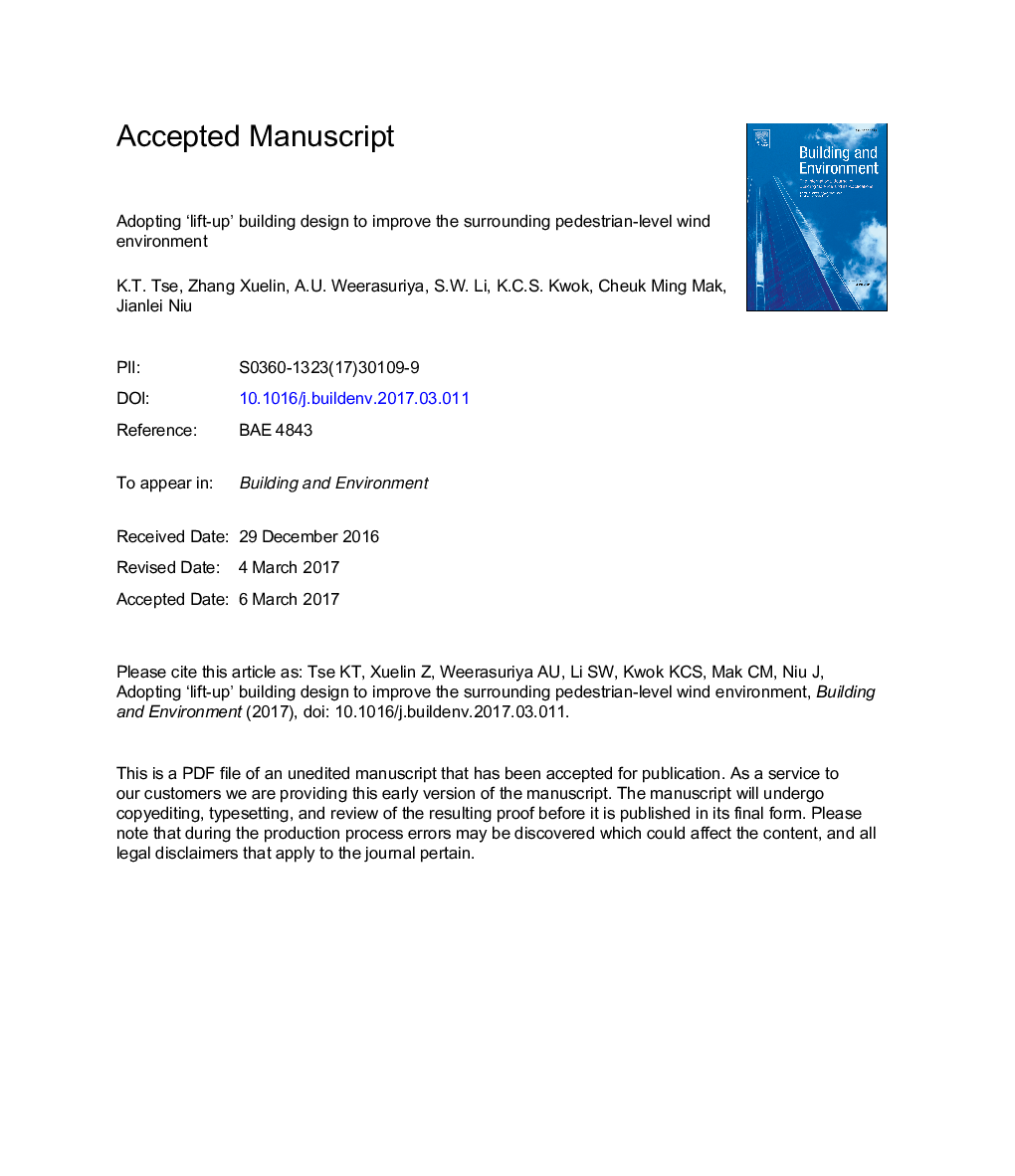| Article ID | Journal | Published Year | Pages | File Type |
|---|---|---|---|---|
| 4917310 | Building and Environment | 2017 | 37 Pages |
Abstract
Modern megacities are teeming with closely-spaced tall buildings, which limit air circulation at the pedestrian level. The resultant lack of air circulation creates poorly ventilated areas with accumulated air pollutants and thermal discomfort in the summer. To improve air circulation at the pedestrian level, buildings may be designed to have a 'lift-up' shape, in which the main structure is supported by a central core, columns or shear walls. However, a lack of knowledge on the influence of the 'lift-up' design on the surrounding wind environment limits the use of 'lift-up' buildings. This study aims to investigate the influence of 'lift-up' buildings and their dimensions on the pedestrian-level wind environments using wind tunnel tests. A parametric study was undertaken by using 9 'lift-up' building models with different core heights and widths. The results were compared with the surrounding wind environment of a control building with similar dimensions. The results reveal that the 'lift-up' core height is the most influential parameter and governs the area and magnitude of high and low wind speed zones around such buildings. Based on wind tunnel test results and a selected comfort criterion, appropriate core dimensions could be selected to have acceptable wind conditions near lift-up buildings.
Related Topics
Physical Sciences and Engineering
Energy
Renewable Energy, Sustainability and the Environment
Authors
K.T. Tse, Xuelin Zhang, A.U. Weerasuriya, S.W. Li, K.C.S. Kwok, Cheuk Ming Mak, Jianlei Niu,
